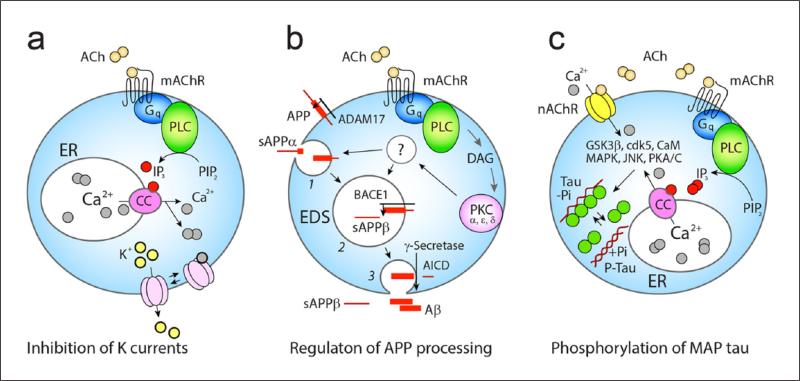Figure 4.
Dual neuromodulator and homeostatic effects of ACh. (a) Activation of the mAChR M1 receptors stimulates Gq-protein → PLC and downstream events involving IP3 signaling and mobilization of intracellular Ca2+, which inhibits the low-threshold K+ and Ca2+ activated K+ currents. ER, endoplasmic reticular Ca2+ stores; CC, IP3 sensitive calcium channel, Ach, acetylcholine. (b) ACh via the same receptor and stimulation of DAG → PKC α,ε,δ also regulates the activity of BACE1 and ADAM17—two of three key amyloid precursor protein (APP) cleaving proteases. Cleavage of APP by ADAM17 (non-amyloidogenic) with shedding of sAPPα occurs on the surface or within early endosomes (1), while β/γ cleavage takes place in acidifying endosomes (2, 3), a step that is followed by release of sAPPβ and Aβ as well as with the generation of the APP intracellular domain (AICD) involved in nuclear signaling. (c) Stimulation of nAChR and mAChR can increase intracellular Ca2+ and activate an array of kinases (GSK-3b (beta instead of ‘b’), cdk5, CaM, MAPK, JNK, PKA/C) which can promote the phosphorylation of microtubule-associated protein (MAP) tau. This leads to unbinding of MAP tau from microtubules with their collapse and formation of oligomeric and fibrillary tau.

